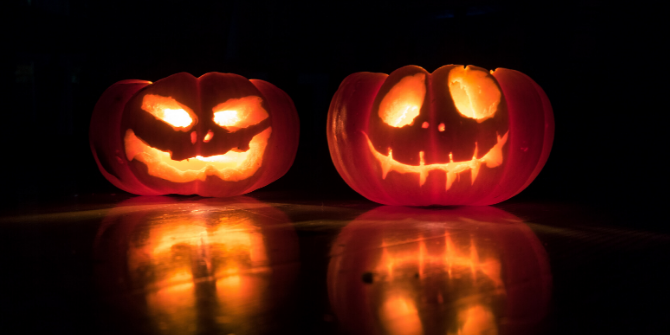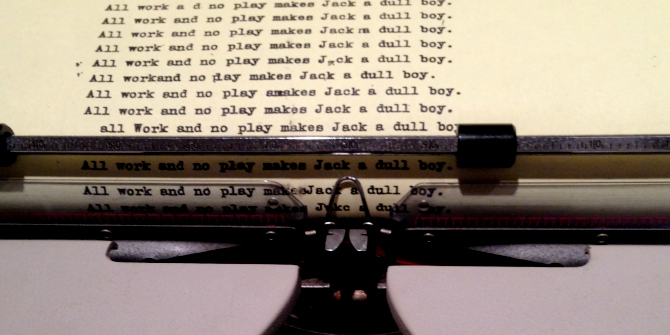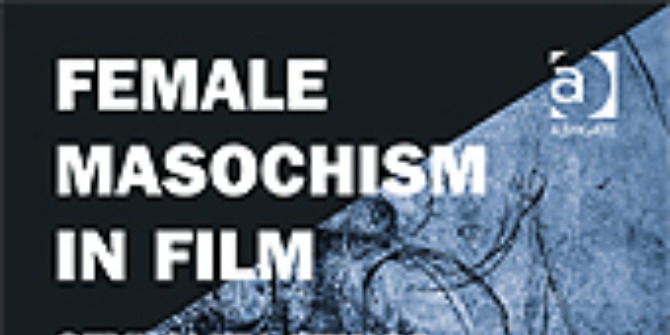Since George Méliès’s groundbreaking three-minute gothic extravaganza Le Manoir du Diable (1896), the cinematic landscape has been haunted with myriad ghouls, spectres, witches, vampires and pulsating horrors both internal and external. Punters queue in their millions, gleefully waiting to be petrified – adjusted for inflation, The Exorcist (1974) is the ninth highest grossing film of all time, while 2007’s low-fi masterwork Paranormal Activity is the most profitable movie ever made, in terms of return on investment.
Understanding what gets under our skin, and the cinematic techniques that will have a crowd shrieking into their popcorn, may feel like trying to catch a willow-the-wisp with a butterfly net. Like a flickering phantasm, fear moves, transforms, defies definition and explanation. One person’s nightmare Blair Witch experience is another person’s tedious holiday seasickness throwback.
Yet, for the curious cat-people, there are serious and revelatory tomes that whisper of the strange cinematic alchemy that evokes shivers and yelps from hapless teenagers, and roots itself insidiously in those gloomy nooks of the mind that only begin to creak in the hidden depths of the night. Here are five of them.
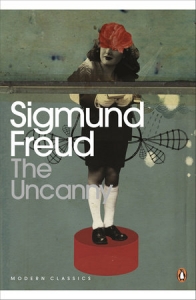 The Uncanny. Sigmund Freud. 1919 .
The Uncanny. Sigmund Freud. 1919 .
In his seminal essay, the father of psychoanalysis deconstructs the deep feeling of unease, or unheimlich, elicited by horror artefacts, and so contextualises some of horror cinema’s most timeless and frightening images. Taking E.T.A. Hoffman’s short story The Sandman (1816) as a case study, Sigmund Freud reveals the fundamental human terror in the movements of nominally inanimate objects (demonic doll Annabelle (2014) being one recent example), as well as the oppressiveness of repetition-compulsion (exploited to haunting effect by Stanley Kubrick in The Shining (1980)) and the psychological disturbance of witnessing violent physical contortions (the cornerstone of The Exorcist’s (1973) grotesqueries). His analysis of the visceral horrors of severed limbs, and their relation to the castration complex, would no doubt also be welcome screams to the ears of Sam Raimi, director of The Evil Dead (1981), and the ghouls behind the Saw franchise.
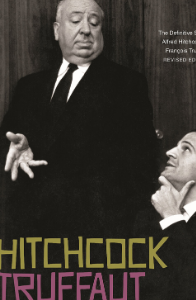 Hitchcock. François Truffaut. 1983.
Hitchcock. François Truffaut. 1983.
Purists might argue that the master of suspense directed just one true horror film – 1963’s Daphne Du Maurier adaptation, The Birds. There are few, however, who would argue against Alfred Hitchcock having cast one of the longest, deepest shadows over the genre. In 1963, when Hitchcock was at the height of his international success, he sat down with nouvelle vague progenitor François Truffaut to discuss his craft, a conversation that lasted over a decade and is captured in this extraordinary, moreish book. Droll, incisive and revelatory, Hitchcock shines light onto his tenebrous art, from using space to build to a crescendo of anxiety in Psycho (1960) to constructing the infamously savage slaying in Torn Curtain (1966). For those who want to peep behind the blood-red curtain, it’s utterly indispensable.
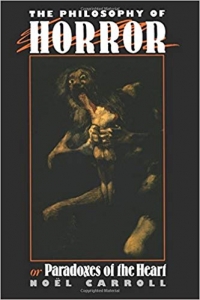 The Philosophy of Horror. Noël Carroll. 1990.
The Philosophy of Horror. Noël Carroll. 1990.
Journalist-turned-academic Dr Carroll wrote his playful yet erudite treatise on the aesthetics and philosophies of horror to convince his family (and perhaps himself) that his die-hard commitment to a derided genre hadn’t been a total waste of time. In it, he explores the paradox of how humans are both repelled by, yet magnetically attracted to, the horrifying, pulling in a wide range of examples from Edgar Allan Poe to Clive Barker, and extrapolating a convincing thesis on how terror of the impure, infected or fetid lurks in the dark corners of human imaginings. Terror that anyone who has cringed to Videodrome (1983), The Fly (1986) or any of David Cronenberg’s other great body-horrors will recognise. Fear, like comedy, is deeply subjective, and while some of Carroll’s conclusions about how audiences are scared by things they know not to exist may not ring entirely true, this is a brave and influential effort to break down enduring mysteries.
 Men, Women and Chainsaws. Carol Clover. 1992.
Men, Women and Chainsaws. Carol Clover. 1992.
The slasher movie is considered one of the most reactive and misogynistic of sub-genres, replete with sweaty sequences of barely clothed young women being methodically stalked and slain by heavy-breathing, oft-masked male psychopaths. US academic Professor Clover subverts this preconception in her slice of feminist revisioning, interrogating the point of view utilised in slasher and rape-revenge films, and how the male gazer is encouraged to identify with the ostensible prey, rather than with the hunter. Clover dives into the works of cutting-edge genre masters and subversive artists, such as Wes Nightmare on Elm Street Craven and John Halloween Carpenter, blurring the lines between passive victim and ‘avenging hero’. She establishes the female body as a focal point of ‘otherness’ as well as human power, and possession films like The Exorcist as locus of the feminisation of the masculine viewpoint. Challenging, exciting stuff.
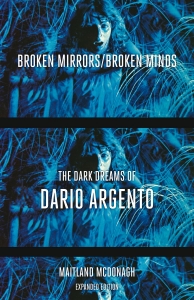 Broken Mirrors/Broken Minds. Maitland McDonagh. 2010 [1991].
Broken Mirrors/Broken Minds. Maitland McDonagh. 2010 [1991].
For many, Dario Argento’s twisted fairy-tale Suspiria (1977) looms as the most frightening film ever made. Meshing woozy dream logic with slasher gore, Argento’s visceral nightmare of a witch-infested Black Forest ballet school crawling with maggots (and nubile ballerinas) is ripe for critical unpacking, and McDonagh’s seminal work does it best. Mutating from her 1986 thesis, she interrogates the fragmented narratives and censor-baiting imagery of Suspiria and all of Argento’s most influential chillers, including video nasty Tenebre (1982) and giallo masterwork Profondo Russo (1975), teasing out how mastery of colour, perspective, space, Hitchcock’s tension and Freud’s unheimlich helped him build an unrivalled body of terror works.
Note: This reading list gives the views of the author, and not the position of the LSE Review of Books blog, or of the London School of Economics.
Image Credit: (Photo by David Menidrey on Unsplash).


